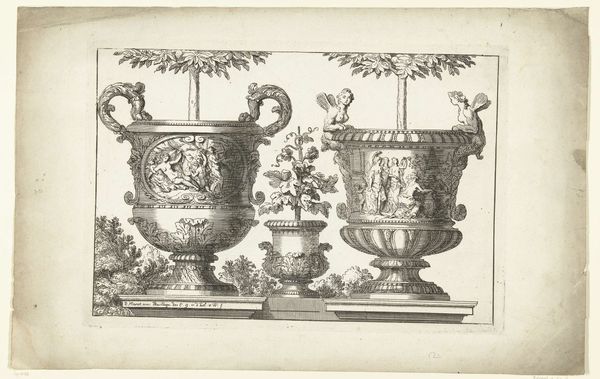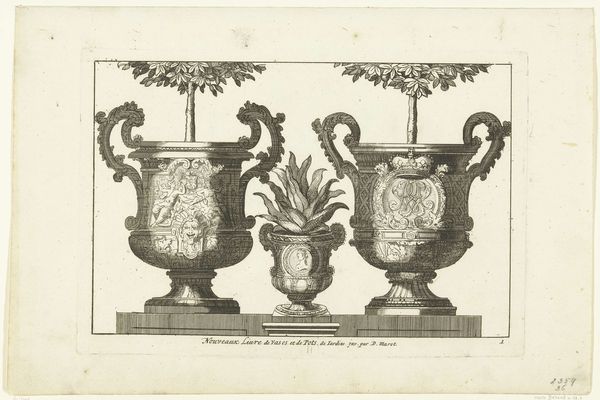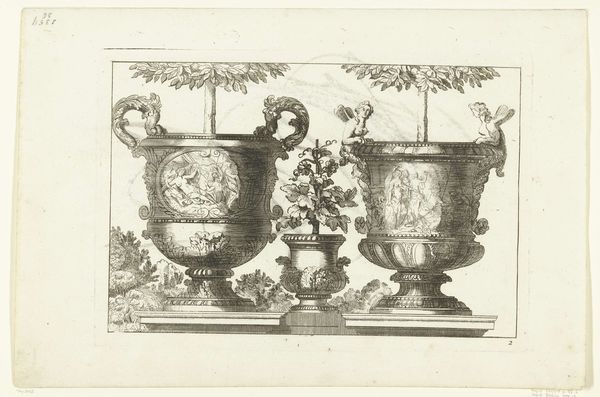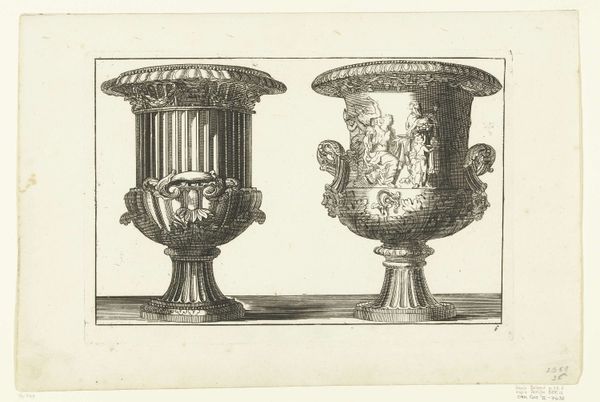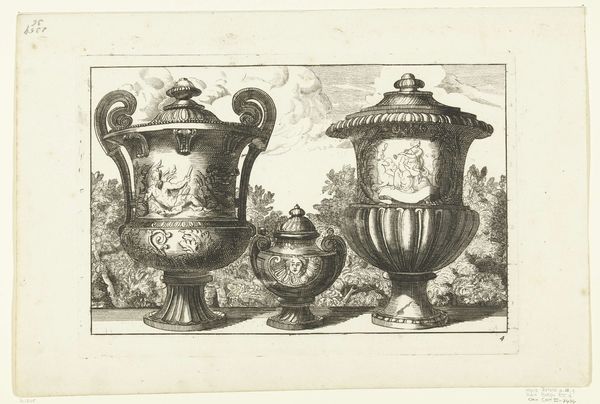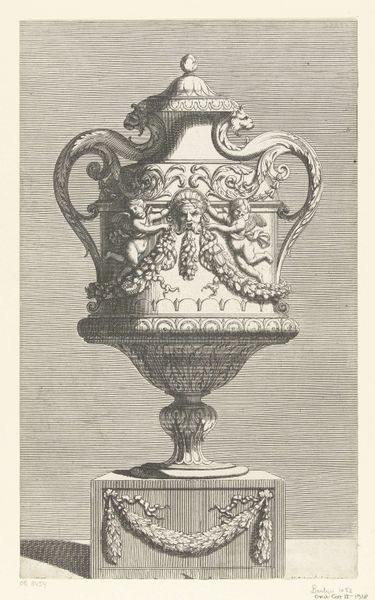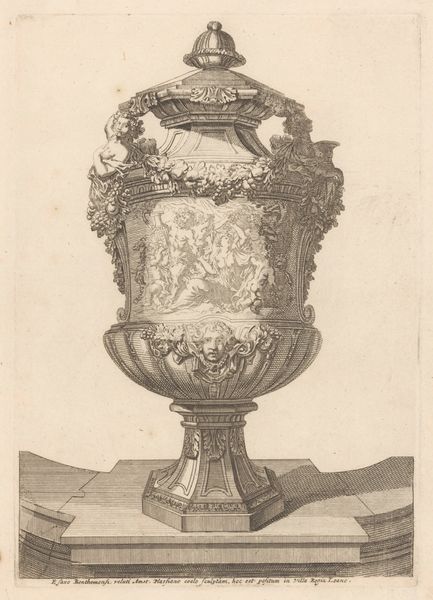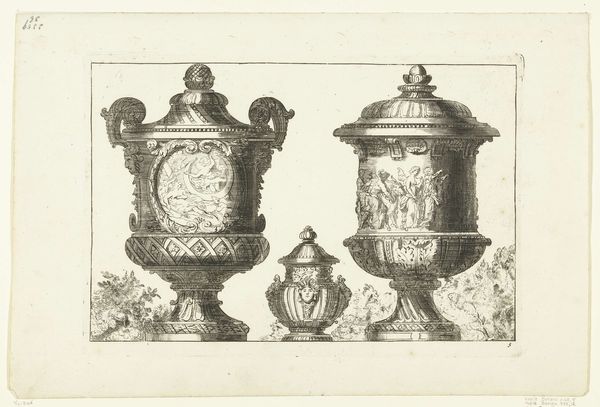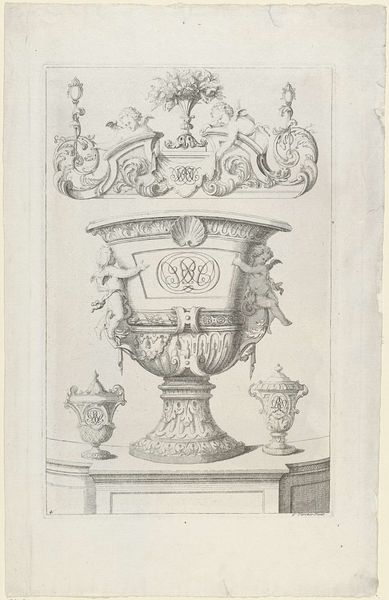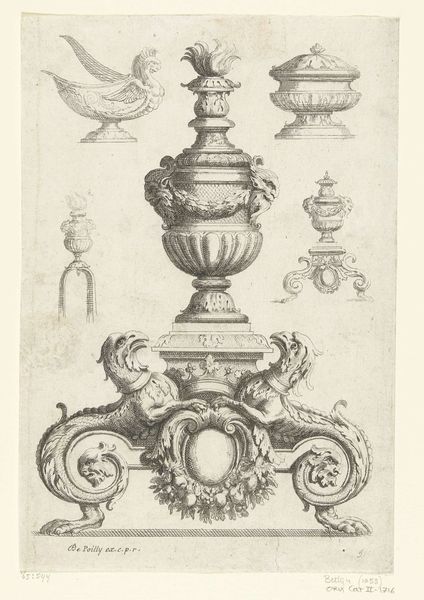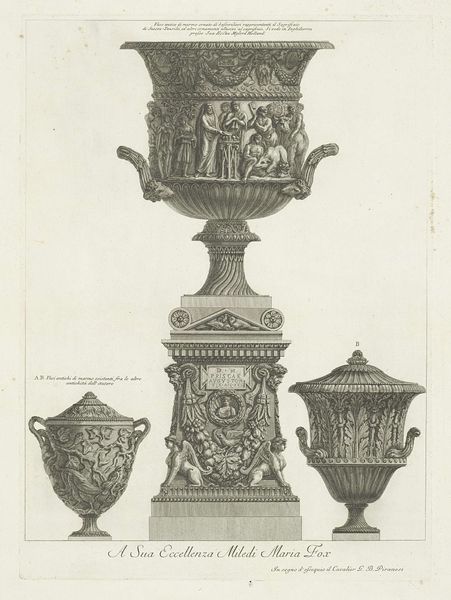
Dimensions: height 188 mm, width 276 mm
Copyright: Rijks Museum: Open Domain
Curator: Looking at this print, I’m immediately struck by the sheer labor evident in creating this ornate design; consider the craft, Editor. The intricate details achieved solely through engraving before 1800 are fascinating. Editor: Absolutely! But for me, it's the vessels themselves. These aren't merely functional items; they're potent symbols of containment, tradition, and, considering the mythological scenes depicted, reservoirs of collective memory. Curator: Good point! It is important to note the social function that items of this nature may have performed in Baroque era spaces. The materials are important as well! This specific example from our collection at the Rijksmuseum, entitled "Twee grote vazen en een kleine vaas," by an anonymous maker, emphasizes this materiality even though it’s rendered as a print. Editor: Exactly! Think of what those circular medallions evoke: classical sculpture, tales of gods and heroes. They aren't just decorations; they communicate social status through allusion and invite repeated readings. And the foliage sprouting from the vessels underscores ideas of life and growth within stable, refined structures. Curator: You are spot on with your read. However, thinking from a historical context I also consider the role of artisan in relation to their product, the labor divisions necessary for such elaborate design. Was there special status achieved by producing a print with a subject of luxury? It offers wider availability. Editor: Intriguing! It presents these high status goods in accessible print form! What was initially a very contained market opened its gates ever so slightly, giving a different audience the option to acquire some semblance of luxury, in print form. Curator: Exactly. By exploring the object in terms of production we've found that a print work such as this represents democratization of image and opens discussions about cultural aspirations within its moment. Editor: I’ll have to give it to you—examining how the object’s existence shifts and how it changes consumption provides fresh understanding of the era. Thanks for bringing that to light.
Comments
No comments
Be the first to comment and join the conversation on the ultimate creative platform.

